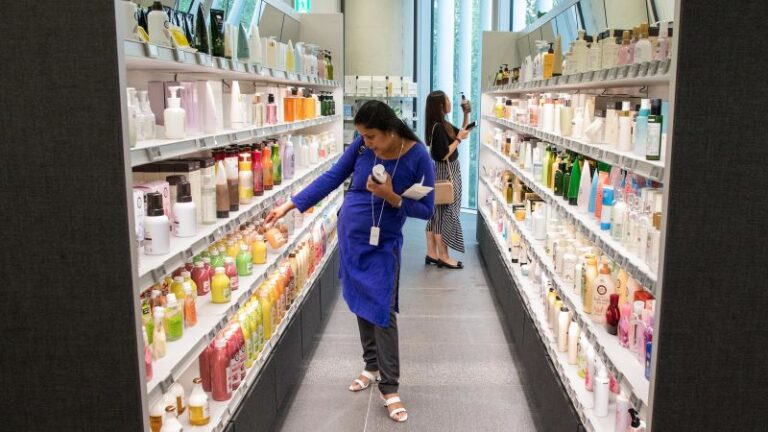The Impact of U.S. Tariffs on Korean Beauty Products
New York | CNN
K-Town’s Beauty Boom Amidst Trade Tensions
On a rainy Tuesday afternoon, beauty stores in Manhattan’s Koreatown are bustling with activity. However, a store associate recently informed CNN that one well-loved sunscreen has altered its formula due to new manufacturing in the United States, while another popular product has been out of stock for weeks.
Tariffs and Their Effects on Korean Imports
The situation is compounded by President Donald Trump’s recent imposition of a 25% tariff on imports from South Korea, a long-time trading partner. The acting President of South Korea, Han Duck-soo, has indicated a willingness to negotiate rather than retaliate against these tariffs, but uncertainty looms for both nations.
The Rise of K-Beauty in America
Just ten years ago, Korean beauty products were a rarity in the U.S. Now, imported cosmetics from South Korea are worth $1.7 billion, surpassing imports from even France, a traditional beauty hub. Prominent Korean companies such as Amore Pacific reported significant growth, with their U.S. sales surpassing those in China for the first time.
Consumer Concerns Over Product Availability
American consumers have grown irrevocably fond of affordable Korean products, including sophisticated sunscreens and innovative skincare items. Unfortunately, many of these products feature modern UV filters that have yet to gain approval from the U.S. Food and Drug Administration. As a result, fans of Korean beauty are facing a shortage of alternatives in the U.S.
Crisis for Small Businesses and Consumers
The looming possibility of price increases due to tariffs has left both consumers and retailers anxious. For instance, Christina Im, owner of the Korean skincare retailer Olive Kollection, rushed to stock up on $40,000 worth of products after the tariff announcement, a significant increase from her usual order size. While she hopes to avoid drastic price hikes for her customers, the unsettling economic climate is causing many to reconsider their purchases.
The Future of Korean Brands in the U.S. Market
Brands like KraveBeauty are already feeling the pressure, as they prepare to raise prices that have historically remained below $28 due to the increased costs from tariffs. The founder, Liah Yoo, expressed that the adjustments are unavoidable, indicating a significant shift in the landscape of K-beauty in America.
Strategies and Adaptations Amidst Change
Some Korean brands have opted to either discontinue sunscreen sales in the U.S. or relocate their manufacturing processes domestically to meet U.S. regulations. Analysts caution that these changes could result in products that differ significantly from their original formulations, potentially diminishing their appeal to consumers already accustomed to their effectiveness.
Conclusion: The Resilience of K-Beauty Enthusiasts
Despite these challenges, the American consumer’s appetite for K-beauty products remains robust. Bottled with expectations of dewy skin and innovative skincare, many continue to stock up on their favorite Korean products online. Some even jokingly consider traveling to Korea just to maintain their skincare routines. As this dynamic unfolds, it remains to be seen how the landscape of Korean beauty products will evolve in the U.S. market amidst increasing tariffs and changing regulations.
